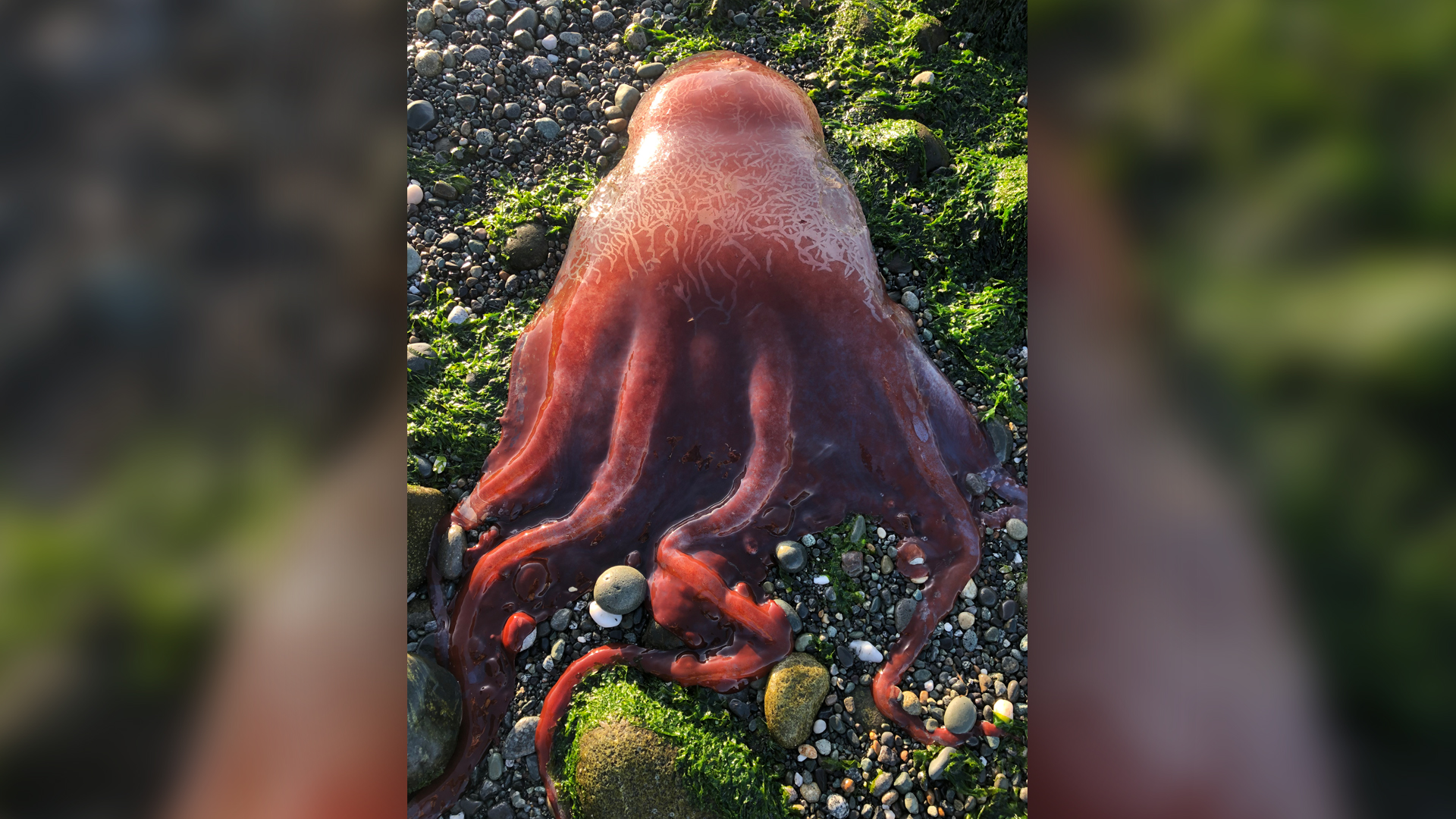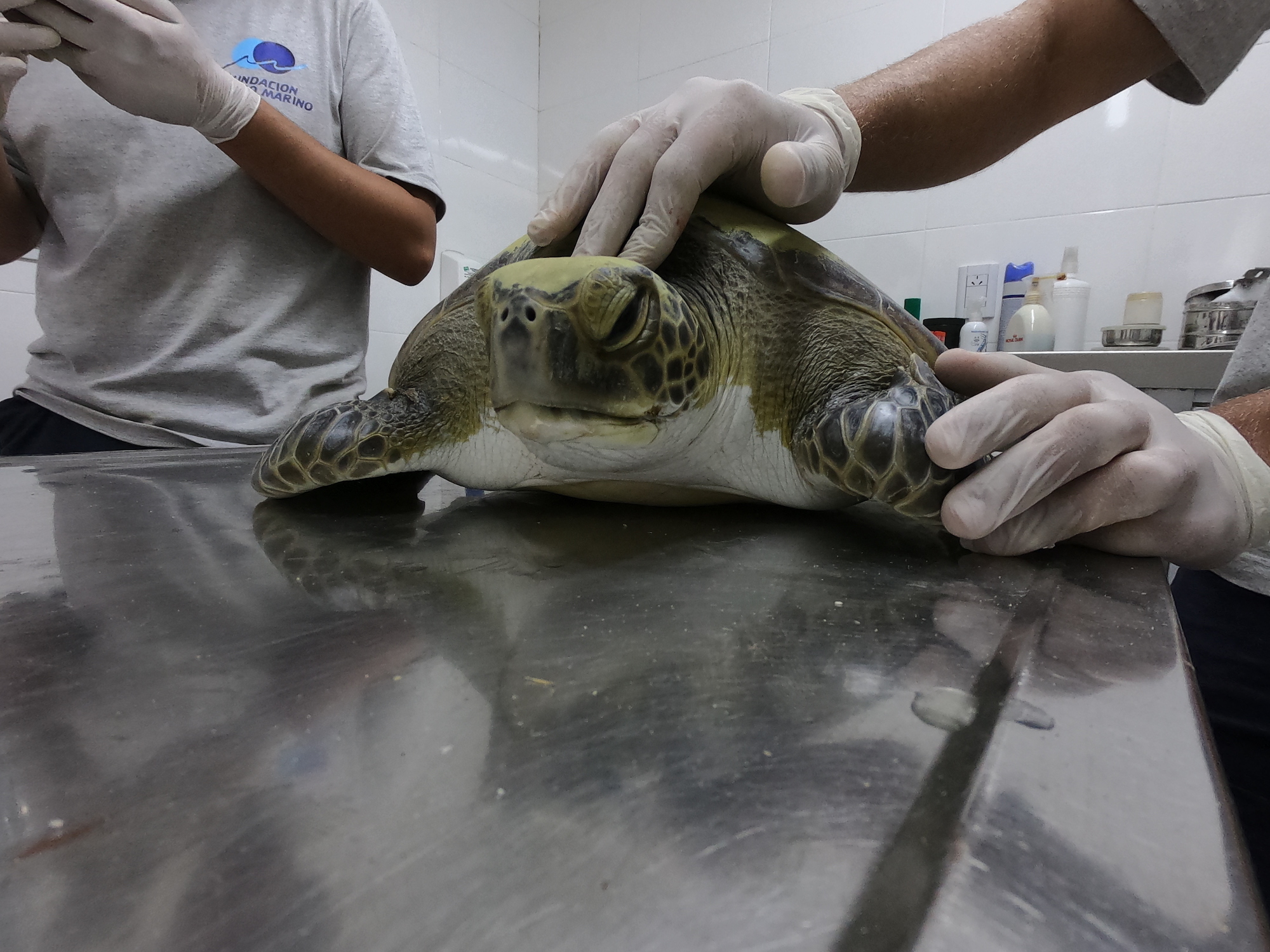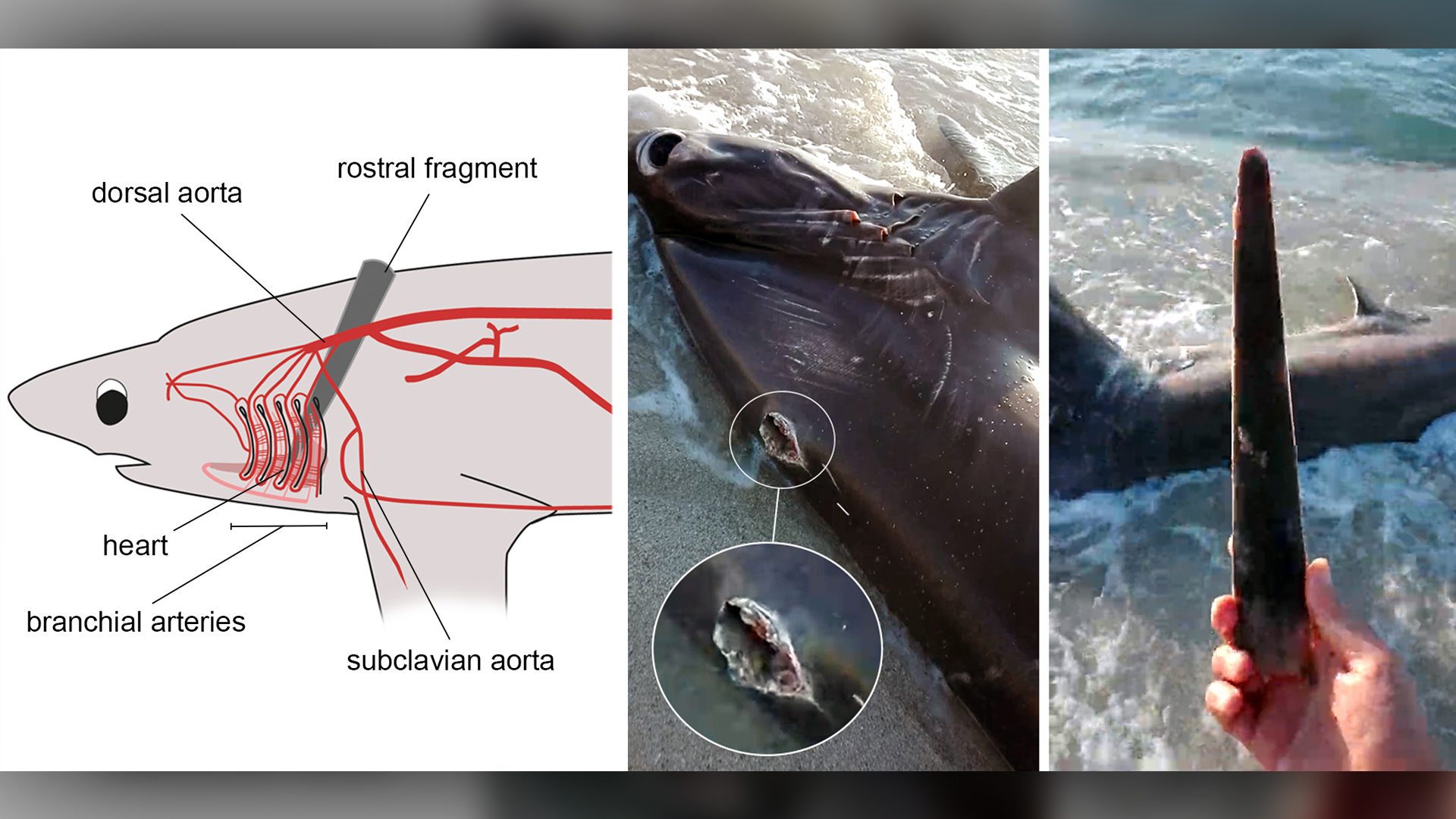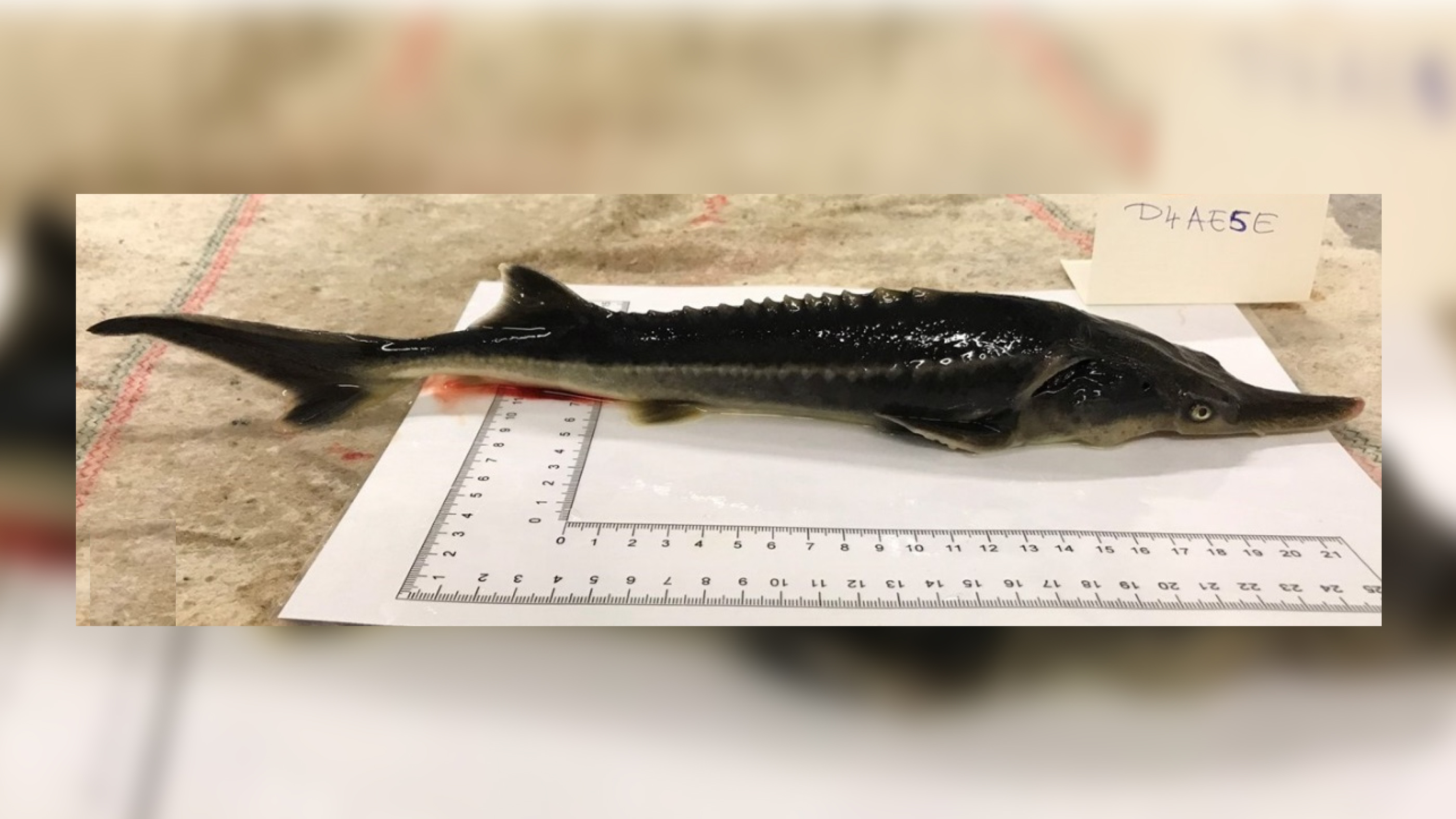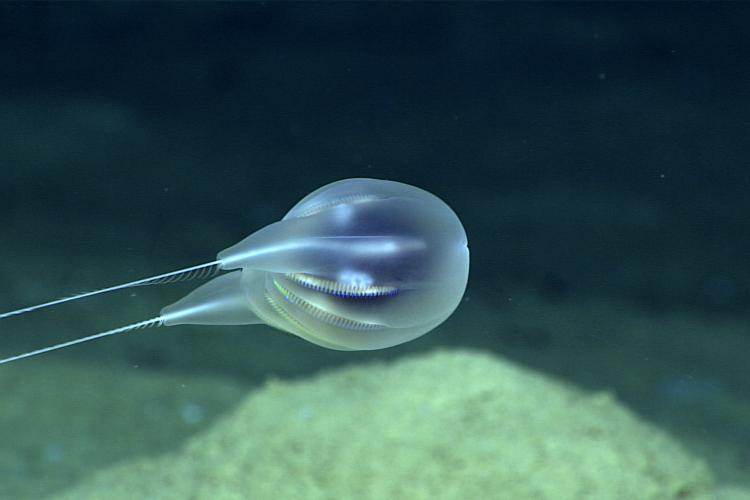10 strange animals that washed ashore in 2020
One had 8 arms and 2 tentacles.

The ocean is filled with creatures that might look strange to human eyes. But every once in a while, these weirdos from the deep make an appearance on dry ground. Here are 10 instances when these ocean animals came (or were spied from) ashore in 2020.
Giant squid with foot-wide eyes
It's rare to see a giant squid (Architeuthis dux), so people took notice when one washed ashore in Cape Town, South Africa on June 7. These squid are very eccentric-looking — their eight arms and two tentacles are covered with serrated suckers with powerful suction; they have the largest eyes in the animal kingdom (measuring 1 foot, or 30 centimeters, in diameter); and they can reach lengths up to 60 feet (18 meters).
This particular giant squid is now in the collections of the Iziko Museums of South Africa, and its DNA may help researchers determine if there is just one or many species of giant squid living deep beneath the waves.
Read more: Stunningly intact giant squid washes ashore in South Africa
7-armed octopus (where's the 8th arm?)
When a man spotted a "red glob" on the rocky beach of an island near Seattle, he snapped some photos that set off a friendly debate about the creature's identity. The blob was clearly a cephalopod (a group that includes squid, octopus, cuttlefish and nautilus), but what species was it?
The scientific consensus arrived at the seven-armed octopus (Haliphron atlanticus), a deepwater creature that usually doesn't swim in Washington's cold coastal waters.
Despite its curious name, the octopus has more than seven arms. In males, the eighth arm is used during mating, and the rest of the time it stays modestly tucked away in a sac near its right eye.
Get the world’s most fascinating discoveries delivered straight to your inbox.
Read more: Bright 'red glob' washes ashore in Washington. It may be a 7-armed octopus.
9-armed octopus almost becomes dinner
After a seaweed farmer caught some octopuses in a trap off Japan, he took them home for his mother to cook. But just after she dropped one in a boiling pot, she realized that it had nine arms, so she fished it out.
How did this octopus get nine arms? Just like lizards can regrow tails, octopuses can regrow arms. However, sometimes the regeneration process flubs and the regrown arm gets an offshoot, or ninth arm. Sometimes these flubs can happen over and over again — one octopus reportedly ended up with 90 arms, according to a 1965 study.
The family donated the nine-armed octopus's body to a local museum so the public can see this unusual curiosity.
Read more: Rare 9-armed octopus found off Japan coast
Mass die-off
Thousands of dead sea creatures, including octopuses, fish and starfish, washed ashore on the remote Russian peninsula of Kamchatka. The culprit? A mass poisoning event. Even surfers were bothered by it, saying they felt a mild burning in their eyes after going into the bay.
The die-off may have wiped out as many as 95% of the animals in Kamchatka's Avacha Bay, a catastrophic event that will likely disrupt the food chain in that area for the remaining animals, local researchers said.
Local and international scientists initially thought that human-made pollution caused the die-off when it started in early October. However, since then it's come to light that toxic algae could have been the cause of this ecological disaster, the BBC reported.
Read more: Dead animals are washing ashore on a remote Russian peninsula. What's going on?
Gone fishing
Man finds giant spider dragging his pet goldfish out of pond https://t.co/DB5vQZckUc pic.twitter.com/XzIDZWovVkJanuary 2, 2020
A man was dismayed to discover that his pet goldfish, Cleo, had met her end from an unexpected eight-legged predator: a spider.
Cleo lived in a pond by the man's house. Apparently, so did her assassin — a nursery web spider, or a semiaquatic arachnid that can walk on still water, dive under the surface to escape predators and even "fish" for prey many times its size.
This nursery web spider dragged Cleo ashore, apparently for a fishy feast. (We're sorry, Cleo!)
Read more: A man caught a spider eating his pet goldfish and, well, it's terrifying
Trashy poop
A green turtle caught in a net off the coast of Argentina had a very upset tummy. How do we know? It pooped out loads of human trash, including pieces of nylon bags and hard plastics.
It's likely the turtle mistook this trash for its regular prey, such as jellyfish, seagrasses and worms. The trash it ate instead took up room in its belly, which probably made it hard for the turtle to eat real food and get the nutrients it needed to survive.
Veterinarians gave the turtle a medication that helped it poop, and the turtle recovered, according to the Mundo Marino Foundation in Argentina.
Read more: Green turtle rescued from fishing net poops out all kinds of human trash
Shark versus swordfish
Scientists were thrown for a loop when a dead thresher shark washed ashore on the coast of Libya with a swordfish's "sword" embedded in its body. Swordfish are known to be aggressive toward animals they perceive as threats (including some whales, sea turtles and humans), but they've never been documented attacking thresher sharks before.
Thresher sharks eat small fish and wouldn't be a threat to swordfish, the researchers said.
Perhaps, the two were fighting over prey, the scientists said, although it's also possible the stabbing was an accident.
Read more: Whodunit solved when 'sword' is found embedded in thresher shark
Fishy love
What do you get when you unintentionally cross Russian sturgeon with American paddlefish?
An unusual love hybrid — everybody, say "hello" to the sturddlefish.
There are about 100 of this odd hybrid in captivity now, researchers announced in the journal Genes. Scientists have no plans to make more. The sturddlefish came into being when the team attempted to help the critically endangered Russian sturgeon (Acipenser gueldenstaedtii), a popular caviar supplier, reproduce. The researchers thought that American paddlefish sperm would trigger asexual egg development in the sturgeon, but (as you probably guessed), that's not what happened. The sturgeon's eggs fused with the paddlefish sperm, and hybrids were born.
Mazel tov!
Read more: Scientists accidentally create 'impossible' hybrid fish
Puppy-size sea "pill bugs"
Remember looking for pill bugs (or potato bugs or roly polies) when you were a kid? Can you imagine a big one, about the size of a puppy, lurking deep in the sea?
Like a pill bug, this freaky-looking beast is an isopod, and it's the largest one on record. Found in Indonesia and dubbed Bathynomus raksasa ("rakasa" translates to "giant" in Indonesian), this isopod measures about 13 inches (33 cm) long and is the first new giant isopod to be found in more than a decade.
Read more: Massive 'Darth Vader' sea bug pulled from waters near Indonesia
Marine blob
What looks like a party balloon but lives deep underwater? A new species of ctenophore called Duobrachium sparksae that's related to comb jellies.
Researchers first spied these weird, golf tee-size beings in an underwater canyon off the coast of Puerto Rico in 2015, but they didn't publish the results until this year. Every time D. sparksae (can we just call it "sparky"?) moves, rows of its tiny hair-like cilia refract light into a prism of shining colors, Live Science reported.
We hope Sparky has a great New Year, and that you do too!
Read more: Newfound marine blob looks like 'party balloon' with two strings, scientists say
Originally published on Live Science.

Laura is the managing editor at Live Science. She also runs the archaeology section and the Life's Little Mysteries series. Her work has appeared in The New York Times, Scholastic, Popular Science and Spectrum, a site on autism research. She has won multiple awards from the Society of Professional Journalists and the Washington Newspaper Publishers Association for her reporting at a weekly newspaper near Seattle. Laura holds a bachelor's degree in English literature and psychology from Washington University in St. Louis and a master's degree in science writing from NYU.


